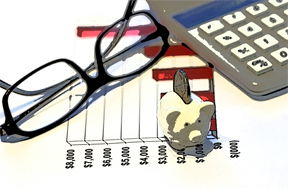 To classify the specialized field of “trade press,” I have included various technical and business periodicals as well as many industry journals. These publications and websites cover practically all forms of technology, commerce and manufacturing—their field essentially targets business. Some trade publications deal with big business almost exclusively; other trade publications focus mainly on small retail businesses.
To classify the specialized field of “trade press,” I have included various technical and business periodicals as well as many industry journals. These publications and websites cover practically all forms of technology, commerce and manufacturing—their field essentially targets business. Some trade publications deal with big business almost exclusively; other trade publications focus mainly on small retail businesses.
The Trade Press in the United States
The magnitude of the trade press industry in the United States is estimated at over 4,000 print trade magazines and journals, such as Drug Store News, Pallet Enterprise Magazine, Commercial Integrator Magazine, etc. You can view a comprehensive list of trade publications at http://www.tradepub.com and http://www.freetrademagazines.com. This does not include, of course, the number of online trade publications. You can also find a huge market of trade publications in Canada which are also available as a market for the freelance writer.
The capital invested in trade journals in this country is estimated at $53,000,000. We have countless associations and publishers that publish trade journals. You can Google “trade magazines associations” to review a list. The number of full-time and part-time employees connected with 250 selected trade publications is around 7,000. These 250 journals pay an estimated
$35,000,000 a year.
One New York city publishing company owns its own printing factory and employs some 900 people to publish and distribute fifty-five trade publications. Its annual payroll exceeds a million and a half dollars. You will recognize a key difference between a trade journal and a class journal. A trade journal devotes its editorial content to the interests of some industry of trade, and the class journal devotes its editorial interests to one class of readers.
For example, Furniture World is a trade magazine of the furniture trade, and The Writer magazine is a class journal for writers. Archery Business is a class journal rather than a trade journal. The difference between these two is insignificant as we are concerned—both classes of publications provide plenty of writing opportunities for freelance writers.
A Trade Publication for Every Industry
Nearly every business activity has its own trade publication and trade association. When you review the trade publications at TradePub.com, you will discover many decade-old publications that you never knew existed and are thriving today in both print and online. You can also go to Google.com and find a trade magazine that matches your interest. Let’s say you are into metal welding. Type in “welding trade magazine” and Google will find you relevant trade publications.
The trade press covers a broad canvas of publishing interests. Many aspiring writers are unaware about trade publications because publishers do not circulate them in book stores or at newsstands; rather, trade publishers distribute each issue directly to a tightly-focused readership who have specific interests.
The Trade Press Workforce
Trade publications have the same employment structure as many large and small newsstand magazines. Staff consists of editors, assistant editors, staff writers, reporters and freelance writers. This core group of workers make their living as trade professionals and “semi-literary” writers. Their annual salaries are slightly below incomes of editorial workers at mainstream publications.
Whether you are a freelance writer or a trade professional who enjoys writing, you can find a trade magazine that targets your skills and where editors always welcome outside contributors. Many writers and trade professionals do make a lucrative income writing for trade publications. The average rate is between .25 cents to .80 cents per word for articles.
How Do Freelance Writers Fit In?
Trade publications attract writers from two primary sources. Trade editors actively seek out tradesmen and women and turn them into writers; and/or editors invite freelance writers to pitch query letters and articles and make them familiar with the trade. Since the former option is the easiest and simplest, most trade editors prefer to work with freelance writers.
The writer who has mastered literary construction and knows how to write for the readerships’ readability level will find plenty of writing opportunities and can become a regular contributor for many trade pubs. A demand exists right now, today, for people who know how to write, who understand the business represented by the trade publication for which they want to write. Plenty of editorial positions are vacant at this moment.
The Goal of the Trade Press
In large part, the trade press works for the good of its readers, to advance their knowledge and improve their skills at their trade. The trade press represents their readers’ attitudes and livelihoods. It strives to show readers how to do more business, be more productive, and increase profit. The aim of the trade press is perpetually upward. The proliferation of business and industry over the last few decades has greatly improved the significance of trade publications. Trade professionals desire them because they learn something new and important in their industry. The trade press, as a whole, is the pedigree of knowledge for workers and business professionals.
Trade Press Publishing Schedules
You can find many weekly trade publications, especially ones that cover food, beverage, and manufacturing. Frequency in publishing (weekly, monthly, bi-monthly or quarterly) does not determine the strength of a trade journal. You can find strong and weak trade journals in both classes. The grocery industry contains the most weeklies, and has fewer watchdog organizations. The grocery trade journals are mostly small in circulation and limited in area. These trade journals pay comparatively lower rates for freelance articles.
Trade Associations as Publishers
Many trade publications are the mascots of large, influential trade associations. For example, “California Pharmacist Journal” is represented by the California Pharmacists Association; “MCAA Reporter” is the companion publication of the Mechanical Contractors Association; “Meat Science Journal” is the companion publication of the American Meat Science Association. These publications pertain to the interests of the members belonging to the association. Sometimes a board of directors from the association edits each issue and is in charge of hiring freelance writers.
Special Issues
Some publishers will publish in sections, while other publishers will publish special issues or issued devoted to an upcoming trade show. The trade press publishes many special issues throughout the year to zero in on special developments in technology, research, commerce and trade, etc. A trade publisher may decide to publish a special issue devoted to a new drug, or a special issue edited entirely by subscribers, or an issue targeting just women business owners, and so on. Publishing special issues helps trade publishers earn extra money in advertising .
Advertising Helps Trade Pubs Survive and Thrive
Some of the trade publications carry a large amount of advertising. The “JCK magazine” for the jewelry industry may have eighty or so pages of advertising in an ordinary issue. Some of the automobile and the furniture trade publications display large advertising sections. Advertising supports nearly every trade publication. Since most subscriptions are free to trade professionals, publishers put in the extra effort to procure advertisers. Advertising rates are naturally lower in these periodicals than in standard magazines because of limited circulation.
Steady Income for Freelance Writers
As with all legitimate writing opportunities, the trade press does not offer a way to earn a quick buck for mediocre work. Any writer who seeks an easy way to get into print is wasting time. Any writer who is willing to stake his or her reputation on producing mediocre articles is wasting time trying to be a writer. The trade press is a distinct market for writers who know how to write for the particular needs of the readership—it is not an easy market for poor work. The editor is as strict as other editors. The readers are as intelligent, if not smarter.
The trade press market has existed for many decades and continues to grow stronger with the Internet and social media. This is a permanent field for the freelance writer. You can expect satisfactory pay rates in return for writing highly-specialized content to meet the demands of the editors and readers in the technical class.



